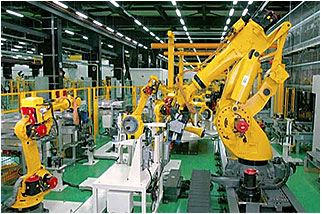
EnGen Institute 1992-2022

I N
S T I T U
T E
INDUSTRIAL DEVELOPMENT
The ‘global man-machine manufacturing system’ self-replicates. All technology on Earth wears out and is replaced. The replacement machines are
not extra-terrestrial imports, but produced on Earth somewhere in the broadly distributed global man-machine manufacturing system.
This global manufacturing system is a network of factories connected by various supply lines and logistical systems. Raw materials enter this network
at some locations, pass through multiple stages of transformation in multiple factories via numerous pathways, finally resulting in consumer goods
distributed globally.
This network from raw material to elaborately transformed manufacturables is determined by a complex network of physical engineering constraints.





NASA studies of bootstrapping industry on the Moon or Mars are relevant and provide key
insights to the essential physical architecture of this materials transformation network.
The network connections are also determined by economics and social-political requirements.
There are thus three types of constraints on the architecture of the global manufacturing
system; physical material constraints, economic constraints and social-political constraints.
The location of industries and manufacturers is often determined by low labour, low energy
and logistics costs. Logistics cost are reduced with local manufacturing. New factories are an
opportunity to transition to locally produced energy. Local recycling can reduce imports.
Labour cost is reduced by robotics & automation and eliminated in ‘lights out’ automation.
Constructor Automation will reduce capital costs by enabling factories that produce multiple
products, automating the transition from design to manufacturing and facilitating low volume
customized production. Investment in automation is often critical for economic viability.
Due to Covid-19 pandemic supply problems, nations are assessing their trade-dependency and the feasibility of establishing ‘onshore’ industries.
Countries wanting to ‘onshore’ industry need to understand materials transformation networks and advanced automation opportunities - then
sequentially select manufacturing and processes to be brought onshore in order to create a wave of reduced input costs that will enable the
economically viable development of their onshore manufacturing network.






















